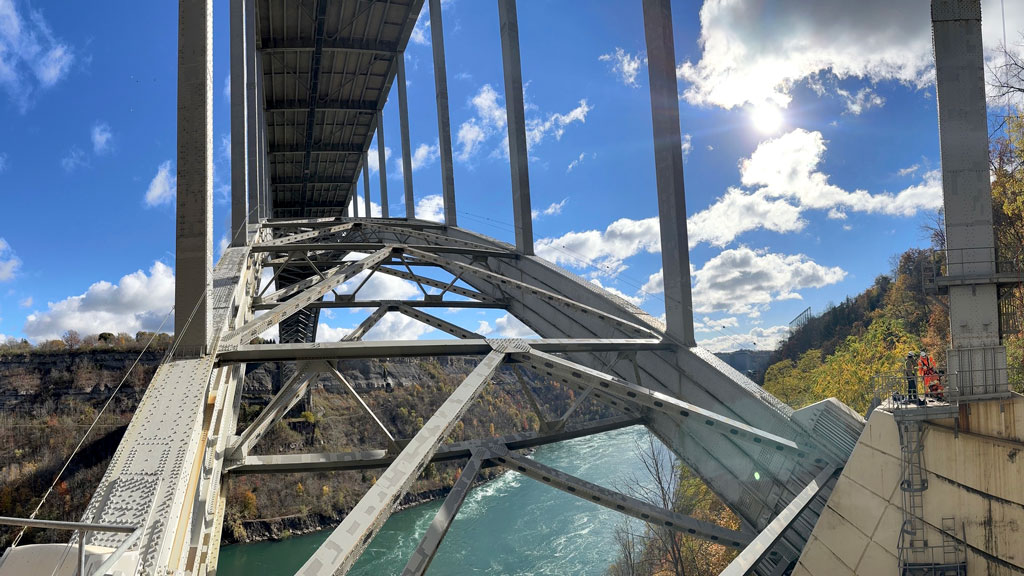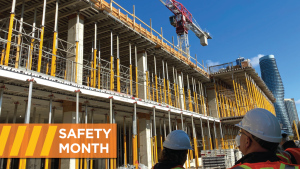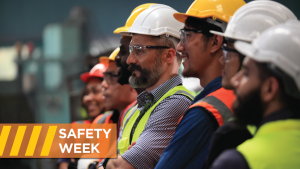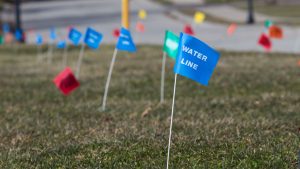Project management consultant GHD is pledging it will be safety first, and safety always, as the firm designs a plan to send crews to undertake rehabilitation work under the decks of two international bridges in Ontario’s Niagara Region over the next two years.
GHD recently landed a design-bid-build contract to oversee rehab work on the Lewiston-Queenston and Rainbow Bridges over the Niagara River.
Mark Torrie, Ontario transportation engineering leader at GHD, didn’t hesitate when asked to name the biggest concern of the project, which involves working in an environment with steep embankments high above the swiftly flowing waters of the Niagara.
Workers will strip decades-old corroded coatings from the steel skewback connections under the bridge decks, including three-inch-diameter anchor bolts that have to remain in place, and reapply modern coatings.
The project owner is the Niagara Falls Bridge Commission (NFBC).
“The main challenge on this project is access, safety and access,” said Torrie.
“We’re collaborating with the commission to have an access plan for the contractors to work with next year to safely get equipment, material and people down to the base to undertake this work.”
The work is being done proactively by the commission, with the bridges in operation for over 60 years and the corrosion in the early stages and not unexpected given the humid conditions of the river gorge.
The work is intended to optimize the asset life cycle costs for the commission, GHD says. There will be no interruptions to the flow of traffic and goods across the border.
The bridges are different in design and size, but Torrie said the work will be pretty much the same on both. Work will start next year with completion expected in 2025.
The Rainbow Bridge is an arch bridge built in 1941, 1,000 feet down river from the American Falls. It’s 1,450 feet long and sits 200 feet above the Niagara River, with 18 traffic lanes in New York and 16 in Ontario.
Built in 1962, the Lewiston-Queenston Bridge, a truss design, sits 370 feet above the Niagara River and measures 1,600 feet long.
The span features five reversible lanes, allowing traffic flows to be configured based on volume.
Both structures have been subjected to other rehab projects recently. In 2022, the Rainbow Bridge Concrete Pier Rehabilitation Project on the U.S. side was completed under budget as were the Rainbow Bridge Canadian Plaza Asphalt Pavement and Waterline Replacement projects.
That same year, the Queenston Plaza Asphalt Pavement project was also completed along with other jobs.
Torrie said the commission is “very collaborative, they’re very knowledgeable, very involved.
“The collaborative approach brought to the table by the GHD team and NFBC has resulted in a highly innovative design process,” he said, noting design was still underway.
The project contractor has not yet been selected. Torrie said there will be a significant volume of materials, equipment, machinery and labour involved as the new team designs access.
Scaffolding may be one method of access, he suggested.
At least the soil levels are near the bedrock, Torrie said, offering some stability.
Crews will no doubt be sandblasting the existing coating off, he said.
Another issue to address will be adhering to the two sets of specs required.
“Since we’re working on both sides of the river, we have to set up a contract package to utilize the specifications of both Canada and U.S.,” he said.
GHD is an employee-owned company active in the water, energy and resources, environment, property and buildings, and transportation sectors. It’s got 11,000 employers at more than 160 offices on five continents.
Torrie, for one, is eager to get to work on the Niagara River project: “We’re excited to get to construction next year.”
Follow the author on Twitter @DonWall_DCN.








Recent Comments
comments for this post are closed